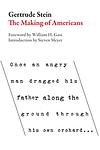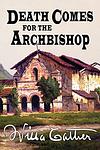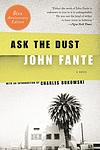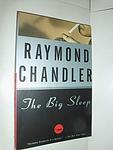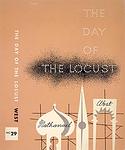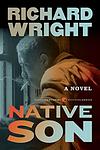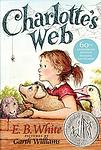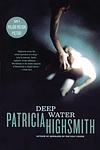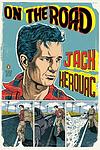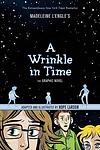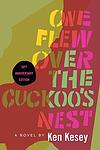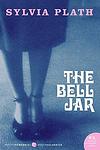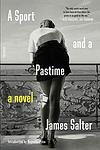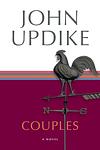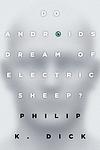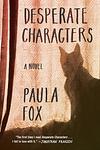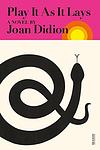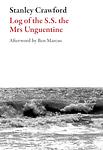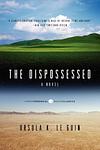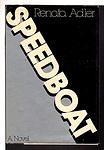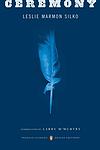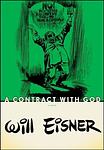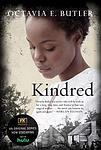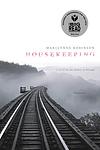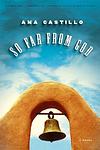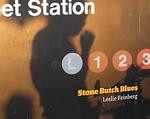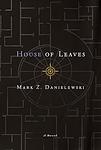The Great American Novels
This is one of the 284 lists we use to generate our main The Greatest Books list.
-
The Great Gatsby by F. Scott Fitzgerald
Set in the summer of 1922, the novel follows the life of a young and mysterious millionaire, his extravagant lifestyle in Long Island, and his obsessive love for a beautiful former debutante. As the story unfolds, the millionaire's dark secrets and the corrupt reality of the American dream during the Jazz Age are revealed. The narrative is a critique of the hedonistic excess and moral decay of the era, ultimately leading to tragic consequences.
-
An American Tragedy by Theodore Dreiser
This classic novel explores the dark side of the American Dream through the story of a young man who, despite his humble beginnings, aspires to climb the social ladder. He becomes involved with two women, one wealthy and one from a working-class background. His ambition and desire for status lead him to commit a crime that ultimately results in his downfall. The novel is a stark examination of the destructive power of unchecked ambition and the moral compromises people are willing to make in pursuit of wealth and status.
-
The Making of Americans by Gertrude Stein
"The Making of Americans" is an experimental novel that explores the concept of identity and the human condition through the lens of two American families. The author uses repetitive and complex prose to delve into the intricacies of family dynamics, social status, and personal development. The narrative is less about plot progression and more about the philosophical exploration of what it means to be an American, offering a unique perspective on the cultural and psychological tapestry of the nation.
-
Death Comes for the Archbishop by Willa Cather
This novel follows the life of a Catholic bishop and a vicar as they attempt to establish a diocese in New Mexico Territory. The story highlights their struggles and triumphs over the course of 40 years, dealing with the harsh landscape, cultural differences, and the challenges of faith. It also explores the history and culture of the Southwest, including the influence of Mexican and Native American traditions.
-
A Farewell to Arms by Ernest Hemingway
Set during World War I, the novel follows an American ambulance driver in the Italian army and his love affair with a British nurse. The story is a first-person account of the protagonist's experiences in war and his struggle to survive amidst chaos and destruction. The narrative explores themes of love, war, and the fragility of life, culminating in a tragic ending that underscores the futile nature of war and the inevitable suffering it brings.
-
Passing by Nella Larsen
"Passing" is a novel about two light-skinned African-American women, Irene Redfield and Clare Kendry, who can 'pass' as white. Set during the Harlem Renaissance, the story explores the intricacies and challenges of racial identity in 1920s America. Clare, who has chosen to live as a white woman, married to a racist who is unaware of her true heritage, risks everything when she reconnects with her childhood friend Irene, causing both women to grapple with their identities and desires, leading to tragic consequences.
-
The Sound and the Fury by William Faulkner
The novel is a complex exploration of the tragic Compson family from the American South. Told from four distinct perspectives, the story unfolds through stream of consciousness narratives, each revealing their own understanding of the family's decline. The characters grapple with post-Civil War societal changes, personal loss, and their own mental instability. The narrative is marked by themes of time, innocence, and the burdens of the past.
-
Absalom, Absalom! by William Faulkner
This novel is a complex narrative about Thomas Sutpen, a poor white man who rises to power in the South, aiming to create a dynasty that would rival the old aristocratic families. However, his ambitions are thwarted by his own flawed decisions and the overarching racial and societal tensions of the era. The story is not told in a linear fashion but rather through a series of interconnected flashbacks and narratives, offering different perspectives on the same events. The book explores themes of family, class, race, and the destructive power of obsession.
-
Nightwood by Djuna Barnes
"Nightwood" is a modernist novel that explores the complex relationships and sexuality of a group of Americans and Europeans living in Paris in the 1920s. The story primarily revolves around the tumultuous love affair between two women, one of whom is a married aristocrat. The narrative, known for its poetic and dense language, delves deep into the characters' psyches, exploring themes of identity, gender, and desire. The novel is also notable for its frank and groundbreaking depiction of homosexuality and transgender issues.
-
East Goes West by Younghill Kang
This novel is a captivating narrative that follows the journey of a young Korean immigrant as he navigates the complexities and challenges of life in the United States during the early 20th century. Through his eyes, readers are offered a rich exploration of the immigrant experience, marked by a quest for identity and belonging amidst cultural dislocation. The protagonist's encounters and observations provide a poignant commentary on the contrasts between Eastern and Western philosophies and lifestyles, as well as the universal search for meaning and connection in a rapidly changing world. This story is not only a personal tale of adaptation and self-discovery but also a broader reflection on the intersections of culture, identity, and the human condition.
-
Their Eyes Were Watching God by Zora Neale Hurston
This novel follows the life of Janie Crawford, a young African-American woman, in the early 20th century. She embarks on a journey through three marriages and self-discovery while challenging the societal norms of her time. The narrative explores her struggle for personal freedom, fulfillment, and identity against the backdrop of racism and gender expectations, ultimately emphasizing the importance of independence and personal growth.
-
U.S.A. Trilogy by John Dos Passos
The U.S.A. Trilogy is a series of three novels that chronicle the lives of various characters in the first half of the 20th century in the United States. The narrative intertwines the stories of twelve characters as they navigate the societal changes and upheavals of the era, including World War I, the Great Depression, and the rise of Hollywood. The author uses a unique narrative technique that combines traditional prose, newspaper-style headlines, biographies, and stream-of-consciousness writing to paint a vivid picture of American life during this period.
-
Ask The Dust by John Fante
The novel follows the story of an aspiring young writer of Italian-American descent living in Los Angeles during the Great Depression. Struggling to make his mark in the world of literature, he grapples with poverty, his own insecurities, and a tumultuous love affair with a fiery Mexican waitress. As he navigates the gritty underbelly of the city, he seeks to find his voice and identity amidst the dust and desperation of his surroundings, often confronting the challenges of prejudice and his own personal demons. The narrative is a raw and introspective journey through the pursuit of the American Dream, as seen through the eyes of a conflicted and passionate protagonist.
-
The Big Sleep by Raymond Chandler
In this classic detective novel, a private investigator is hired by a wealthy family to resolve a blackmail issue involving the younger daughter. As he delves deeper into the case, he uncovers a web of deceit, murder, and organized crime. The detective's investigation is further complicated by his growing attraction to the older daughter, adding a layer of personal involvement to an already complex case. The novel is renowned for its gritty depiction of 1930s Los Angeles and its sharp, witty dialogue.
-
The Day of the Locust by Nathanael West
"The Day of the Locust" is a novel set in 1930s Hollywood, portraying the dark side of the American dream through the lives of its desperate characters. The protagonist, a young artist from the East Coast, finds himself disillusioned by the superficiality and decay of Hollywood society, which is filled with failed actors, charlatans, and lost souls. The narrative culminates in a violent riot, symbolizing the destructive power of frustrated dreams and the harsh reality of the American dream.
-
The Grapes of Wrath by John Steinbeck
The book follows the Joad family, Oklahoma farmers displaced from their land during the Great Depression. The family, alongside thousands of other "Okies," travel to California in search of work and a better life. Throughout their journey, they face numerous hardships and injustices, yet maintain their humanity through unity and shared sacrifice. The narrative explores themes of man's inhumanity to man, the dignity of wrath, and the power of family and friendship, offering a stark and moving portrayal of the harsh realities of American migrant laborers during the 1930s.
-
Native Son by Richard Wright
This novel tells the story of Bigger Thomas, a young African-American man living in Chicago's South Side during the 1930s. Bigger's life takes a tragic turn when he accidentally kills a young white woman. The incident leads to his arrest and trial, revealing the deep-seated racial prejudices and injustices prevalent in American society at the time. The narrative explores themes of poverty, systemic racism, fear, and the effects of oppression.
-
The Heart Is A Lonely Hunter by Carson McCullers
The novel explores the spiritual isolation of misfits and outcasts in a small town of the U.S. South. Its protagonist is a deaf-mute who becomes the confidant for various troubled souls including a black physician, a bitter labor activist, a lonely young girl, and a struggling café owner. Each pours their heart out to him, but he remains unable to respond, reflecting the deep human need for connection and understanding.
-
A Time To Be Born by Dawn Powell
Set against the backdrop of New York City on the brink of World War II, this satirical novel delves into the ambitions and relationships of a circle of artistic and literary figures. At its center is a manipulative and ambitious woman who uses her marriage to a wealthy publisher to ascend the social ladder, alongside a cast of characters each navigating their own desires, betrayals, and quests for success. Through sharp wit and keen observation, the narrative explores themes of power, fame, and the complex dynamics of love and friendship in a rapidly changing society.
-
All the King's Men by Robert Penn Warren
"All the King's Men" is a political drama that revolves around the rise and fall of a Southern governor, loosely based on Louisiana's Huey Long. The story is narrated by a journalist who becomes the governor's right-hand man, offering an inside perspective on the political machinations, corruption, and personal tragedies that accompany the governor's climb to power. The novel explores themes of power, corruption, and the moral consequences of political ambition.
-
The Street by Ann Petry
The novel is a poignant exploration of the struggles faced by a young African American single mother living in Harlem during the 1940s. It delves into the systemic racism and sexism that constrict her life, as she endeavors to create a better future for her son amidst the poverty, violence, and oppressive social forces of the urban landscape. The narrative follows her tenacious fight against the insurmountable barriers imposed by a society that is indifferent to her dreams and her dignity, painting a vivid portrait of resilience and the human spirit's quest for freedom.
-
In A Lonely Place by Dorothy B. Hughes
Set in post-World War II Los Angeles, "In A Lonely Place" follows the story of Dix Steele, a former fighter pilot turned Hollywood screenwriter. Dix becomes a prime suspect in a series of brutal murders plaguing the city. As the investigation unfolds, the novel delves into the dark depths of Dix's psyche, exploring themes of love, obsession, and the blurred lines between reality and fiction. With its gripping narrative and psychological tension, "In A Lonely Place" offers a chilling portrayal of a disturbed mind and the destructive power of loneliness.
-
The Mountain Lion by Jean Stafford
This novel follows the coming-of-age journey of two siblings, Molly and Ralph Fawcett, who are sent from their home in Los Angeles to spend summers on their uncle's ranch in Colorado. Set against the backdrop of the American West during the 1930s, the story explores themes of innocence, alienation, and the loss of childhood. As the siblings navigate the rugged terrain of adolescence against the stark and unforgiving landscape of the Rocky Mountains, their bond is tested by the harsh realities of adulthood and the inevitable drift into separate lives. The narrative culminates in a tragic event that marks the end of their childhood and forever alters their relationship, capturing the poignant and often painful transition from youth into maturity.
-
The Catcher in the Rye by J. D. Salinger
The novel follows the story of a teenager named Holden Caulfield, who has just been expelled from his prep school. The narrative unfolds over the course of three days, during which Holden experiences various forms of alienation and his mental state continues to unravel. He criticizes the adult world as "phony" and struggles with his own transition into adulthood. The book is a profound exploration of teenage rebellion, alienation, and the loss of innocence.
-
Charlotte's Web by E. B. White
A young girl named Fern saves a runt piglet from being slaughtered and names him Wilbur. When Wilbur grows too large, he is sent to live in her uncle's barn, where he befriends a clever spider named Charlotte. When Wilbur's life is in danger again, Charlotte weaves messages into her web to convince the farmer that Wilbur is too special to kill. The book explores themes of friendship, sacrifice, and the cycle of life.
-
Invisible Man by Ralph Ellison
The novel is a poignant exploration of a young African-American man's journey through life, where he grapples with issues of race, identity, and individuality in mid-20th-century America. The protagonist, who remains unnamed throughout the story, considers himself socially invisible due to his race. The narrative follows his experiences from the South to the North, from being a student to a worker, and his involvement in the Brotherhood, a political organization. The book is a profound critique of societal norms and racial prejudice, highlighting the protagonist's struggle to assert his identity in a world that refuses to see him.
-
Fahrenheit 451 by Ray Bradbury
In a dystopian future where books are banned and burned by the government to prevent dissenting ideas, a fireman named Guy Montag, whose job is to burn books, begins to question the society he serves. After a series of events, including meeting a free-thinking teenager and witnessing a woman choosing to die with her books, Montag begins to secretly collect and read books, leading to his eventual rebellion against the oppressive regime. The narrative serves as a critique of censorship, conformity, and the dangers of an illiterate society.
-
Maud Martha by Gwendolyn Brooks
The novel is a poignant exploration of the inner life of an African American woman navigating the complexities of identity, beauty, and dignity in 1940s Chicago. Through a series of vignettes, the protagonist reflects on the joys and challenges of her everyday experiences, from the nuances of family dynamics and marriage to the sting of racial prejudice and societal expectations. Her journey is one of self-discovery and resilience, as she seeks to affirm her worth and find contentment amidst the often harsh realities of her world.
-
The Adventures of Augie March by Saul Bellow
"The Adventures of Augie March" is a novel set in Chicago during the Great Depression. The story follows the life of Augie March, a poor but spirited boy growing up in a broken home, as he navigates his way through life. The narrative explores his various jobs, relationships, and adventures, as he constantly seeks his identity and place in the world. His journey is marked by a series of encounters with different people and experiences, each shaping him in unique ways.
-
Lolita by Vladimir Nabokov
The novel tells the story of Humbert Humbert, a man with a disturbing obsession for young girls, or "nymphets" as he calls them. His obsession leads him to engage in a manipulative and destructive relationship with his 12-year-old stepdaughter, Lolita. The narrative is a controversial exploration of manipulation, obsession, and unreliable narration, as Humbert attempts to justify his actions and feelings throughout the story.
-
Giovanni's Room by James Baldwin
The novel explores themes of identity, sexuality, and societal norms in mid-20th century Paris. The protagonist, an American man, grapples with his homosexual identity while engaged to a woman. His life takes a turn when he becomes involved with an Italian bartender, leading to a tumultuous relationship filled with passion, guilt, and self-loathing. The story is a poignant examination of the human struggle for acceptance and the destructive consequences of denying one's true self.
-
Peyton Place by Grace Metalious
Set in a small New England town, the novel explores the lives and scandalous interactions of its residents. The story delves into themes of hypocrisy, social inequities, and moral bankruptcy, all hidden behind the façade of respectability. It follows the lives of three women in particular, each of whom grapples with issues like illicit love affairs, domestic violence, and sexual abuse. The book, with its explicit descriptions and controversial themes, became a sensation upon its release.
-
Deep Water by Patricia Highsmith
This psychological thriller revolves around Vic and Melinda Van Allen, a couple living in a small town in the American suburbs whose marriage has soured due to Melinda's serial infidelities. Vic, a seemingly mild-mannered man, tolerates his wife's affairs to keep the family together for the sake of their young daughter. However, the situation takes a dark turn when Vic uses the rumors of his involvement in the disappearance of one of Melinda's lovers to keep her in line. As the story unfolds, the facade of a normal suburban life crumbles, revealing the complex and disturbing depths of Vic's character and the lengths he will go to protect his family and his pride.
-
No No Boy by John Okada
This novel centers on the life of a young Japanese American man in the aftermath of World War II. Struggling with his identity and the societal rejection he faces for refusing to serve in the U.S. military, he returns to his hometown in Seattle, only to confront the deep divisions within his community and family. As he navigates the challenges of post-war America, he embarks on a painful journey of self-discovery, attempting to reconcile his cultural heritage with his national identity. The narrative delves into themes of loyalty, belonging, and the complexities of racial prejudice, offering a poignant exploration of the immigrant experience in the United States.
-
On the Road by Jack Kerouac
This novel follows the story of a young man and his friend as they embark on a series of cross-country road trips across America during the late 1940s and early 1950s. The protagonist, driven by a desire for freedom and a quest for identity, encounters a series of eccentric characters and experiences the highs and lows of the Beat Generation. The narrative is a testament to the restlessness of youth and the allure of adventure, underscored by themes of jazz, poetry, and drug use.
-
The Haunting of Hill House by Shirley Jackson
The book is a chilling tale that revolves around a group of four individuals who decide to stay in a notoriously haunted mansion to conduct a paranormal investigation. The main character, a shy, reclusive woman with a troubled past, becomes increasingly unstable as she experiences terrifying phenomena and becomes obsessed with the house. As the supernatural events escalate, the lines between reality and imagination blur, leading to a shocking and tragic conclusion.
-
Catch-22 by Joseph Heller
The book is a satirical critique of military bureaucracy and the illogical nature of war, set during World War II. The story follows a U.S. Army Air Forces B-25 bombardier stationed in Italy, who is trying to maintain his sanity while fulfilling his service requirements so that he can go home. The novel explores the absurdity of war and military life through the experiences of the protagonist, who discovers that a bureaucratic rule, the "Catch-22", makes it impossible for him to escape his dangerous situation. The more he tries to avoid his military assignments, the deeper he gets sucked into the irrational world of military rule.
-
A Wrinkle In Time by Madeleine L'Engle
The novel follows the story of a young girl named Meg Murry, her younger brother Charles Wallace, and their friend Calvin O'Keefe as they embark on a cosmic journey to rescue Meg and Charles Wallace's father. The father, a scientist, has been missing since he discovered a new planet using the concept of Tesseract, which is a wrinkle in time. Guided by three mysterious celestial beings, the children travel across different dimensions, face evil forces, and learn about the power of love and self-sacrifice.
-
Another Country by James Baldwin
"Another Country" is a profound exploration of racial, sexual, and creative issues in 1950s Manhattan. The story follows the lives of various characters, including a jazz drummer, a Southern white woman, and a black playwright, among others. As the narrative unfolds, it delves into their struggles with identity, prejudice, and interpersonal relationships, offering a raw and unflinching portrayal of America's social and cultural landscape during a time of intense change and conflict.
-
One Flew Over the Cuckoo's Nest by Ken Kesey
Set in a psychiatric hospital in Oregon, the novel is narrated by a half-Native American patient known as Chief Bromden, who pretends to be deaf and mute. The story follows the arrival of a new patient, a boisterous, rebellious man who challenges the oppressive and dehumanizing system of the hospital, particularly the tyrannical Nurse Ratched. The book explores themes of individuality, rebellion, and the misuse of power, ultimately leading to a tragic conclusion.
-
Pale Fire by Vladimir Nabokov
The novel is a unique blend of fiction, commentary, and poetry, presented as a 999-line poem written by a fictional poet, followed by an extensive commentary and foreword by his neighbor and academic colleague. The novel blurs the line between reality and fiction, as the commentator's notes reveal an alternative narrative, one of exile, intrigue, and murder. The book is a playful exploration of authorship, deception, and the nature of art.
-
The Zebra Striped Hearse by Ross Macdonald
In this gripping detective novel, the protagonist, a seasoned private investigator, is hired by a concerned father to delve into the background of his daughter's enigmatic fiancé, fearing the man's intentions are less than honorable. The investigation swiftly spirals from a simple background check into a complex web of deceit, murder, and long-buried family secrets. Set against the vivid backdrop of Southern California in the 1960s, the detective's journey leads him through a labyrinth of intriguing characters and twisted motives, where the truth is as elusive and shifting as the patterns on a zebra-striped hearse. This classic tale of suspense and intrigue masterfully combines psychological depth with a meticulously plotted mystery, keeping readers on the edge of their seats until the very end.
-
The Bell Jar by Sylvia Plath
The novel follows the story of a young woman who wins a guest editorship at a magazine in New York City and, after a series of personal and professional disappointments, suffers a mental breakdown and returns to her family, where she continues to struggle with depression and suicidal thoughts. The protagonist's experiences in psychiatric institutions and her attempts to reclaim her life are depicted with brutal honesty, making it a poignant exploration of mental illness and the societal pressures faced by women in the mid-20th century.
-
The Group by Mary McCarthy
The novel follows the lives of eight female friends who graduate from Vassar College in 1933. As they navigate the complexities of adulthood, their stories intertwine and diverge, exploring themes of social class, sexuality, and women's roles during a time of political and social upheaval. The narrative delves into their personal and professional struggles, relationships, and the evolving landscape of women's independence, offering a candid and multifaceted portrayal of the challenges and expectations faced by women in the early 20th century.
-
The Crying of Lot 49 by Thomas Pynchon
The novel follows the journey of a woman who stumbles upon a centuries-old conflict between two mail distribution companies when she is appointed the executor of her ex-lover's will. As she delves deeper into the mystery, she begins to question her own sanity and the reality of the conspiracy itself. The story explores themes of communication, interpretation, and the struggle to find meaning in a chaotic world.
-
A Sport and a Pastime by James Salter
The book is a provocative and sensual narrative about an illicit affair between a young American man and a French girl in post-war France. Set in the picturesque town of Autun, the novel explores themes of desire, love, and the blurred line between reality and fantasy. The story is narrated by an unnamed observer, who paints a vivid picture of the couple's passionate relationship, their exploration of love and sensuality, and the inevitable tragedy that follows.
-
Couples by John Updike
This novel delves into the intricate and often tumultuous relationships among ten couples in the suburban New England community of Tarbox. Set in the mid-20th century, the narrative explores themes of infidelity, the complexities of marriage, and the search for personal fulfillment against the backdrop of societal expectations. Through the lens of these intertwined relationships, the book examines the moral and social dilemmas faced by its characters, offering a candid and sometimes controversial portrayal of the sexual mores and cultural dynamics of its time.
-
Do Androids Dream of Electric Sheep? by Philip K. Dick
Set in a post-apocalyptic world, the novel presents a future where Earth's life has been greatly damaged by a nuclear global war, leaving most species extinct. The remaining human population has been encouraged to emigrate to off-world colonies to preserve the human race. Those who remain on Earth are tasked with maintaining the ecological balance by owning and caring for animals, replacing extinct species with mechanical replicas when necessary. The story revolves around a bounty hunter, who is tasked with "retiring" rogue androids that pose a threat to humans, and his emotional and moral struggles as he goes about his work.
-
Divorcing by Susan Taubes
This novel delves into the complexities of marriage, identity, and liberation through the lens of a woman embarking on a journey of self-discovery in the wake of her divorce. Set against the backdrop of mid-20th century Europe and America, it explores the protagonist's struggle to find her own voice and path amidst the societal and personal upheavals of her time. Through a series of reflective and introspective narratives, the book examines themes of love, freedom, and the quest for meaning beyond the confines of traditional roles, offering a poignant and thought-provoking look at the challenges of asserting one's individuality within the constraints of societal expectations.
-
Portnoy's Complaint by Philip Roth
The novel is a first-person narrative, a monologue by a young Jewish man, Alexander Portnoy, who is speaking to his psychoanalyst. He shares his struggles with his identity as a Jewish man in America, his sexual fantasies and frustrations, his complex relationship with his overbearing mother, and his experiences of guilt and shame. The book uses humor and frank language to explore themes of identity, sexuality, and the Jewish experience in America.
-
Slaughterhouse-Five by Kurt Vonnegut
The novel follows the life of Billy Pilgrim, a World War II veteran who has become "unstuck in time," experiencing his life events out of order. This includes his experiences as a prisoner of war in Dresden during the Allies' firebombing, his post-war life as a successful optometrist, his abduction by aliens from the planet Tralfamadore, and his eventual death. The book is a critique of war and a demonstration of the destructive nature of time, with a nonlinear narrative that reflects the chaos and unpredictability of life.
-
Are You There God? It's Me, Margaret by Judy Blume
The book is a coming-of-age story about a sixth-grade girl who is growing up without a religious affiliation, due to her parents' interfaith marriage. The protagonist is in search of a single religion while also confronting typical pre-teen issues such as buying her first bra, having her first period, coping with crushes and the changes that come with growing up. The book explores themes of friendship, religion, love, and self-identity.
-
Desperate Characters by Paula Fox
This novel delves into the lives of a middle-aged couple living in Brooklyn, New York, during the late 1960s. The narrative explores the complexities of their marriage, personal dissatisfaction, and the broader social changes affecting their world. The story is set into motion when the wife is bitten by a stray cat, an incident that becomes a metaphor for the couple's unraveling lives and the pervasive sense of crisis and decay in their urban environment. Through sharp, incisive prose, the book examines themes of alienation, the search for meaning in a changing world, and the fragile nature of human relationships against the backdrop of societal upheaval.
-
Play It As It Lays by Joan Didion
The novel centers around a woman named Maria Wyeth, a former model and actress, who is drifting through life in the 1960s Hollywood scene. As she struggles with a failing marriage, a difficult relationship with her daughter, and a career that's spiraling downwards, she grapples with existential despair. Told in a series of fragmented narratives, the story reveals Maria's mental breakdown, her self-destructive behavior, and her desperate attempts to find meaning in a seemingly meaningless world.
-
Log Of The S.S. The Mrs Unguentine by Stanley Crawford
This novel unfolds as a mesmerizing logbook narrative, chronicling the life of a couple isolated at sea for forty years aboard their lush, garden-laden barge. Through the eyes of the husband, the story delves into the intricacies of their maritime existence, exploring themes of isolation, the complexity of relationships, and the human connection with nature. The narrative is rich with poetic descriptions and philosophical musings, painting a vivid picture of a life that is both confined and infinitely expansive, highlighting the couple's inventive survival, their evolving relationship, and the eventual disintegration of their shared world. This work stands out for its unique storytelling approach, blending surreal elements with a deep exploration of solitude and companionship.
-
Mumbo Jumbo by Ishmael Reed
"Mumbo Jumbo" is a satirical and unconventional novel that explores the cultural and political landscape of 1920s America. The narrative centers around an ancient virus known as "Jes Grew" which is spreading rapidly, causing people to dance, feel joy and lose their inhibitions. The protagonist, an African-American detective, is tasked with finding the text that supposedly contains the cure for this "disease". The book uses this premise to critique Western civilization and its attempts to suppress African and other non-European cultures.
-
Sula by Toni Morrison
The novel is a poignant tale of two African American girls, Nel and Sula, growing up in the racially segregated town of Medallion, Ohio. The narrative explores their friendship, personal struggles, and the societal expectations imposed on them. Sula, the more rebellious of the two, leaves town to live a life of freedom and independence, while Nel chooses to conform to societal norms, marrying and raising a family. When Sula returns, their friendship is tested due to a betrayal, and the town labels Sula as evil. The book delves into themes of friendship, betrayal, individuality, and the societal roles of women.
-
The Revolt Of The Cockroach People by Oscar Zeta Acosta
This book is a vivid, semi-autobiographical narrative that plunges into the heart of the Chicano civil rights movement of the late 1960s and early 1970s in Los Angeles. Through the eyes of its protagonist, a radical lawyer deeply involved in the movement, the story captures the struggles, passions, and identity crises of Mexican Americans fighting for political and social recognition. The narrative is marked by its raw, energetic prose, blending surreal humor with serious political discourse, and portrays a range of historical events and figures from the era, encapsulating the fervor, tensions, and revolutionary spirit of the time.
-
Oreo by Fran Ross
This novel is a satirical and bold exploration of identity, following the journey of a young biracial girl as she navigates the complexities of her heritage. Born to a Jewish father and an African American mother, the protagonist embarks on a quest to find her estranged father, using her wit, her unique cultural background, and a secret guidebook passed down from her grandmother. Along the way, she encounters a variety of eccentric characters and experiences that challenge societal norms and stereotypes, all while showcasing the protagonist's sharp humor and intelligence. The book is a comedic and poignant commentary on race, ethnicity, and the search for self in a world obsessed with labels.
-
The Dispossessed by Ursula K. Le Guin
The novel is a profound exploration of two vastly different societies on twin planets, Urras and Anarres. The protagonist is a brilliant physicist from Anarres, a planet with an anarchist society, who travels to Urras, a planet with a capitalist and authoritarian regime. The book explores his struggle to reconcile his anarchist beliefs with the stark realities of a different socio-political system. It's a thought-provoking investigation of human nature, power structures, and the idea of utopia.
-
Winter In The Blood by James Welch
This novel delves into the life of a young Native American man living on a Montana reservation, grappling with a sense of alienation from both his cultural heritage and the wider American society. Through a series of fragmented memories and encounters, he embarks on a poignant journey of self-discovery, confronting his painful past, including the loss of his brother and father, and his troubled relationship with his family and community. Set against the stark, unforgiving landscape of the American West, the narrative weaves a haunting tale of loss, despair, and the quest for identity and belonging, capturing the protagonist's internal struggle with a raw and powerful intensity.
-
Corregidora by Gayl Jones
The novel centers on Ursa Corregidora, a young African American blues singer in the 20th century, who grapples with the legacy of trauma passed down from her enslaved ancestors. Haunted by the stories of brutality and sexual exploitation told by her great-grandmother and grandmother, both of whom were victims of a Portuguese slaveholder named Corregidora, Ursa navigates her personal relationships and her identity as a black woman. The narrative delves into themes of memory, history, and the enduring impact of slavery on the present, as Ursa seeks to reconcile her heritage with her own experiences of love, sexuality, and artistic expression.
-
Speedboat by Renata Adler
This novel follows a young woman reporter in New York City during the 1970s, as she navigates her professional and personal life. The book is written in a non-linear style, consisting of a series of vignettes, observations, and reflections, rather than a traditional narrative. The protagonist's experiences and thoughts on subjects such as race, politics, and the media form the core of the book, providing a snapshot of the social and cultural landscape of the time.
-
Ceremony by Leslie Marmon Silko
"Ceremony" is a novel that explores the life of Tayo, a World War II veteran of mixed Laguna Pueblo and white heritage. After returning from the war, Tayo struggles with post-traumatic stress disorder and alcoholism. The novel charts his journey towards healing, which involves embracing his Native American heritage and the traditional ceremonies of his people. Along the way, he must confront racism, poverty, and the destructive forces of Western culture, ultimately finding solace and redemption in the ancient rituals and wisdom of his ancestors.
-
Song of Solomon by Toni Morrison
The novel explores the life of an African-American man, Macon "Milkman" Dead III, from birth to adulthood. Set against the backdrop of racial tension in the mid-20th century United States, it delves into his journey of self-discovery and understanding his heritage. As Macon embarks on a literal and figurative journey south to reconnect with his roots, he encounters various characters that help him understand his family history and the power of community. The narrative is deeply rooted in African-American folklore and mythology, offering a profound commentary on identity, personal freedom, and the destructive power of racism.
-
A Contract With God by Will Eisner
This graphic novel is a groundbreaking work that consists of four interconnected stories set in a Bronx tenement in the 1930s. It explores the lives, dreams, and struggles of its Jewish inhabitants with deep empathy and vivid illustration. The narrative delves into themes of faith, loss, love, and the quest for meaning in the harsh realities of life. Through its poignant storytelling and expressive artwork, the book is credited with pioneering the graphic novel format, offering a rich, emotional exploration of the human condition within the urban landscape.
-
Dancer From The Dance by Andrew Holleran
This novel explores the vibrant yet tumultuous life of a young man who immerses himself in the gay scene of New York City during the 1970s. Through a series of vivid encounters and relationships, he navigates the exhilarating highs and devastating lows of love and loss against the backdrop of a society not yet ready to accept him. The narrative, rich with lyrical prose and poignant insights, captures the essence of a time and a community on the brink of change, offering a compelling portrait of the quest for identity and connection amidst the dance of life.
-
The Stand by Stephen King
This post-apocalyptic horror/fantasy novel presents a world devastated by a deadly plague, killing 99% of the population. The survivors, drawn together by dreams of a charismatic and benevolent figure, gather in Boulder, Colorado to form a new society. However, a malevolent figure also emerges, attracting a following of his own and setting the stage for a classic battle between good and evil. The story delves into themes of community, morality, and the capacity for both destruction and regeneration within humanity.
-
Kindred by Octavia E. Butler
"Kindred" is a gripping and thought-provoking novel that follows the life of Dana, a young African American woman living in the 1970s. Suddenly, she finds herself inexplicably transported back in time to the early 19th century, where she becomes entangled in the lives of her ancestors, who are enslaved on a plantation. As Dana navigates the brutal realities of slavery, she grapples with her own identity, the complexities of race, and the enduring legacy of the past. With its powerful storytelling and exploration of the connections between past and present, "Kindred" is a profound examination of history, race, and the enduring resilience of the human spirit.
-
The Dog Of The South by Charles Portis
This novel follows the journey of Ray Midge as he embarks on a quest to retrieve his stolen Ford Torino and his runaway wife, Norma, who has fled with her first husband, Guy Dupree. Midge's pursuit leads him from Little Rock, Arkansas, down into Mexico and Central America, encountering a cast of eccentric characters along the way, including a dubious doctor, a philosophical mechanic, and a civil war enthusiast. Through a blend of humor and adventure, the narrative delves into themes of obsession, redemption, and the search for identity amidst the chaos of the 1970s American South and the vibrant, yet tumultuous landscapes of Central America.
-
Housekeeping by Marilynne Robinson
The novel explores the life of two sisters, Ruth and Lucille, who are raised by a series of relatives in a small, secluded town in Idaho after their mother's suicide. The girls' lives are profoundly affected by the eccentric and transient lifestyle of their aunt Sylvie, who becomes their guardian. The narrative delves deeply into themes of family, identity, womanhood, and the impermanence of life, ultimately leading to a divide between the sisters as they choose different paths in life.
-
The Salt Eaters by Toni Cade Bambara
The novel centers around a healing event in a Southern black community, where a woman named Velma Henry is at the brink of a mental and emotional collapse and is being treated by a healer named Minnie Ransom. The story delves into Velma's personal struggles, her involvement in the civil rights and black nationalist movements, and her quest for self-realization and healing. Through a blend of flashbacks, spiritual encounters, and community interactions, the narrative explores themes of trauma, resilience, and the complexity of the African American experience, while also examining broader issues of race, gender, and societal change.
-
Little, Big by John Crowley
"Little, Big" is a complex tale that weaves together elements of magical realism, fantasy, and family saga. The story follows the Drinkwater family who live in an eccentric house known as Edgewood, which is somehow bigger on the inside than the outside. The family is connected to the realm of Faerie, and the narrative explores their interactions with this magical world. The book spans multiple generations and intertwines the lives of its characters with the cycles of history and myth, creating a multi-layered narrative about love, family, destiny, and the nature of storytelling itself.
-
Oxherding Tale by Charles R. Johnson
This novel is a captivating exploration of identity, freedom, and self-discovery, set against the backdrop of the antebellum South. It follows the journey of a young biracial slave who escapes his plantation in search of freedom and enlightenment. Along the way, he encounters a diverse cast of characters who challenge his perceptions of race, class, and the very nature of existence. Drawing from both Eastern philosophies and the African American experience, the narrative weaves a rich tapestry of themes and stories, offering a profound meditation on the complexities of the human condition and the quest for spiritual liberation.
-
Machine Dreams by Jayne Anne Phillips
"Machine Dreams" is a novel that explores the lives of the Hampson family, set against the backdrop of major American events from the Great Depression through the Vietnam War. Told from different perspectives, the book delves into the individual and collective experiences of the family, their relationships, and their struggles. It provides an intimate look at the impact of war, economic hardship, and societal changes on a typical American family.
-
Blood Meridian by Cormac McCarthy
Set in the mid-19th century, this novel follows a violent teenager known as "the Kid" as he joins a group of Indian-hunters led by the enigmatic and brutal Judge Holden. The narrative is a gruesome depiction of the lawless American West, filled with philosophical musings, vivid descriptions of the harsh landscape, and brutal, relentless violence. The story explores themes of human nature, morality, and the inherent chaos and brutality of life.
-
A Summons to Memphis by Peter Taylor
This novel tells the story of a New York editor who is called back to his hometown of Memphis, Tennessee, by his two manipulative older sisters to help them prevent their elderly father from remarrying. As he becomes embroiled in their family drama, he reflects on his upbringing in the South, his father's tyrannical rule over the family, and the impact it had on his life. The narrative explores themes of family, memory, and the passage of time.
-
Watchmen by Alan Moore
Set in an alternate history where superheroes emerged in the 1940s and 1980s, the story follows a group of retired superheroes who are brought out of retirement after the murder of one of their own. As they investigate, they uncover a plot that could change the course of history and the balance of world power. The book explores complex themes such as the morality of power, the definition of heroism, and the value of human life.
-
Beloved by Toni Morrison
This novel tells the story of a former African-American slave woman who, after escaping to Ohio, is haunted by the ghost of her deceased daughter. The protagonist is forced to confront her repressed memories and the horrific realities of her past, including the desperate act she committed to protect her children from a life of slavery. The narrative is a poignant exploration of the physical, emotional, and psychological scars inflicted by the institution of slavery, and the struggle for identity and self-acceptance in its aftermath.
-
Dawn by Octavia E. Butler
"Dawn" is a thought-provoking science fiction novel that explores themes of identity, power, and humanity's capacity for change. Set in a post-apocalyptic world, the story follows Lilith Iyapo, a woman who wakes up after centuries of being in suspended animation to find herself among an alien race called the Oankali. The Oankali offer to help humanity rebuild, but their assistance comes at a cost: interbreeding with them to create a new hybrid species. As Lilith navigates the complex dynamics of her new reality, she must confront her own fears and prejudices while grappling with the moral implications of the choices she faces.
-
Geek Love: A Novel by Katherine Dunn
This novel follows the lives of the Binewski family, a group of circus performers who have been genetically modified by their parents to ensure their uniqueness and ability to draw in crowds. The story's narrator, Olympia, is a hunchback albino dwarf, and her siblings include Arturo, a boy with flippers for hands and feet, Iphy and Elly, Siamese twins, and Chick, who possesses telekinetic powers. The novel explores themes of love, family, and the concept of normality, all set against the backdrop of the family's traveling carnival.
-
Tripmaster Monkey by Maxine Hong Kingston
Set in the 1960s, the novel follows Wittman Ah Sing, a fifth-generation Chinese-American and recent Berkeley graduate who dreams of becoming a playwright. As he navigates the counterculture of San Francisco and the Beatniks, he grapples with his identity as an American of Chinese descent. The novel is a deep exploration of Asian American identity, the immigrant experience, and the cultural clashes between East and West.
-
Dogeaters by Jessica Hagedorn
The novel is a vivid tapestry of life in the Philippines during the late 20th century, exploring the complex interplay of culture, politics, and personal lives through a diverse cast of characters. From the opulent world of the country's elite to the gritty streets of Manila, the narrative weaves together the stories of a young girl coming of age, a radio drama star, activists, actors, and expatriates. The book delves into themes of colonialism, social stratification, and the powerful influence of media and entertainment, painting a multifaceted portrait of a society in the throes of change and the individuals trying to navigate it.
-
American Psycho by Bret Easton Ellis
The novel is a disturbing and graphic exploration of the mind of a wealthy, young and handsome Wall Street investment banker who is also a psychopathic serial killer. He leads a double life, appearing to be a charming and sophisticated businessman by day, while indulging in horrific acts of violence and murder by night. The narrative provides a satirical critique of 1980s American consumer culture, vanity, and excess, while also delving into the dark underbelly of human nature.
-
How the Garcia Girls Lost Their Accents by Julia Alvarez
This novel follows the story of the four Garcia sisters, who are forced to flee from their home in the Dominican Republic to New York City in the 1960s due to their father's political dissent. The girls struggle to navigate the challenges of assimilation and cultural identity, as they attempt to reconcile their Dominican heritage with their new American lifestyle. The narrative explores themes of identity, family, immigrant experience, and the effects of political unrest, as the girls lose their Spanish accents and adapt to their new environment.
-
Mating by Norman Rush
"Mating" is a novel that follows the story of a female anthropologist who is doing her fieldwork in Botswana. She falls in love with an eccentric and charismatic intellectual who has created a utopian matriarchal village in the Kalahari desert. The narrative explores themes of love, feminism, and idealism as it delves into the complexities of human relationships and societal structures.
-
Bastard Out of Carolina by Dorothy Allison
"Bastard Out of Carolina" is a poignant coming-of-age story set in South Carolina. The narrative follows the life of a young girl who, despite being born out of wedlock, strives to find her place in a world that continuously subjects her to physical and emotional abuse. The book explores themes of poverty, violence, and resilience in the face of adversity, providing a raw and unflinching look at the protagonist's struggle for acceptance and love.
-
The Secret History by Donna Tartt
A group of six classics students at a small, elite Vermont college, led by a charismatic professor, become entranced by the study of Greek culture and decide to recreate a Dionysian ritual, which ends in a tragic accident. The group, bound by their shared secret, begins to unravel as paranoia and guilt take hold. The novel explores themes of beauty and terror, the allure of the esoteric, and the destructive consequences of obsession.
-
So Far From God by Ana Castillo
The novel is a vibrant and magical realist portrayal of the lives of a mother and her four daughters in the small town of Tome, New Mexico. Blending elements of Mexican-American folklore and contemporary issues, it tells the story of the family's struggles and triumphs, weaving in themes of cultural identity, feminism, and spirituality. The narrative is rich with the supernatural and the everyday, as the characters confront challenges such as illness, economic hardship, and personal loss, while also experiencing miraculous and extraordinary events. Through their journey, the book explores the intersection of tradition and modernity, and the resilience of women within a community.
-
Stone Butch Blues by Leslie Feinberg
This novel is a deeply moving narrative that follows the life of Jess Goldberg, a character navigating the complexities of gender identity and societal acceptance in the latter half of the 20th century. Set against the backdrop of the American industrial landscape, the protagonist grapples with the harsh realities of being a butch lesbian in a world that is unaccepting and often violent towards those who defy traditional gender norms. Through a journey of self-discovery, love, loss, and resilience, the story poignantly explores themes of identity, belonging, and the struggle for rights and recognition within the LGBTQ+ community, offering a powerful reflection on the human condition and the search for authenticity in a conformist society.
-
The Shipping News by Annie Proulx
The novel follows the story of a depressed and overweight man who moves with his two daughters to his ancestral home in Newfoundland, Canada, after his unfaithful wife dies in a car accident. There, he begins to rebuild his life, working as a reporter for the local newspaper, The Shipping News, and learning about the harsh realities of the fishing industry. As he delves into his family's history, he begins to find a sense of belonging and a new love. The story explores themes of family, identity, and the power of place.
-
Native Speaker by Chang-rae Lee
This novel delves into the life of Henry Park, a Korean-American industrial spy in New York City, who grapples with his complex identity, torn between his American upbringing and Korean heritage. After his young son's death and a separation from his wife, Henry's latest assignment—to spy on a rising Korean-American politician—forces him to confront his feelings of alienation and his struggle with language and loyalty. Through his journey, the narrative explores themes of cultural identity, betrayal, and the immigrant experience, painting a poignant picture of a man on the fringes of two cultures, seeking a place to belong.
-
Sabbath's Theater by Philip Roth
"Sabbath's Theater" is a darkly humorous and sexually explicit novel about the life of a retired puppeteer, Mickey Sabbath. After the death of his long-time mistress, Sabbath embarks on a journey of self-exploration and reflection, contemplating his past relationships, his career, and his own mortality. The novel is a profound exploration of the human condition, the nature of desire, and the struggle to find meaning in a chaotic and often absurd world.
-
Under The Feet Of Jesus by Helena María Viramontes
This novel is a poignant tale that centers around the life of a young Chicana girl, Estrella, and her migrant family as they navigate the hardships and injustices faced by farm workers in the United States. Set against the backdrop of the California grape fields, the narrative delves into themes of identity, resilience, and the quest for dignity amidst exploitation. Through lyrical prose, the story explores the family's struggles with poverty, labor exploitation, and the constant threat of deportation, while also highlighting their unwavering hope, love, and the strength found in their cultural heritage and community bonds. The title symbolizes both the burden of their toil and the spiritual grounding that sustains them.
-
Infinite Jest by David Foster Wallace
This novel is a complex, multi-layered narrative that explores themes of addiction, recovery, and the human condition in a near-future society. The story is set in a tennis academy and a halfway house for recovering addicts, and it intertwines the lives of its numerous characters, including a gifted but troubled teenage tennis prodigy, his filmmaker father, and a group of Quebecois separatists. The book is known for its length, intricate plot, and extensive use of footnotes.
-
I Love Dick by Chris Kraus
This book is a groundbreaking fusion of memoir and fiction, exploring the intense obsession of a married, struggling artist with a man named Dick. Through a series of unsent letters, the protagonist delves into her infatuation, using it as a lens to examine her own artistic and personal aspirations. The narrative blurs the lines between reality and fantasy, offering a candid and provocative look at female desire, power dynamics, and the search for identity. As the protagonist confronts her own vulnerabilities and ambitions, the book challenges traditional narratives about love, art, and femininity.
-
Underworld by Don DeLillo
"Underworld" is a sweeping narrative that spans from the 1950s to the end of the 20th century, exploring the interconnectedness of events and the impact of the Cold War on American society. The story revolves around a diverse group of characters, including a waste management executive, a graffiti artist, a nun, and a baseball collector, among others. These characters' lives intertwine in unexpected ways, illustrating the complex web of relationships and influences that shape our world. The novel is renowned for its vivid portrayal of historical events and its profound examination of themes such as memory, technology, and waste.
-
The Intuitionist: A Novel by Colson Whitehead
The novel is a blend of mystery and speculative fiction set in a parallel universe where elevator inspection is a high-stakes profession. The protagonist, the first black woman elevator inspector in a fictional city, is a member of the "Intuitionist" school of elevator inspection, which involves intuitive and psychic readings of elevators. When an elevator she inspects crashes, she is blamed for the incident and must delve into the political corruption and racial prejudice of her world to clear her name. Along the way, she discovers a mysterious notebook that may contain the secrets to perfecting elevators and changing her world forever.
-
Blonde by Joyce Carol Oates
The novel is a fictionalized account of the life of one of Hollywood's most enduring and enigmatic icons, Marilyn Monroe. It reimagines her life from her troubled childhood as Norma Jeane Baker through her rise to stardom and her tragic demise. The book delves into the complexities of her inner life, exploring her relationships, her struggles with fame, and her quest for love and identity. It presents a psychological portrait that blends fact with speculation, capturing the dichotomy between the public persona of the blonde bombshell and the private experiences of a woman both blessed and cursed by her beauty and allure.
-
House of Leaves by Mark Z. Danielewski
The novel is a complex and multi-layered narrative that revolves around a young man who comes across a manuscript written by a blind man about a documentary that doesn't appear to exist. The documentary is about a family who moves into a house that is larger on the inside than it is on the outside, with shifting walls and hallways that lead to impossible spaces. The novel is known for its experimental layout, with some pages containing only a few words and others filled with footnotes, different fonts, and sideways text, reflecting the disorienting and labyrinthine nature of the house itself.
The Atlantic, 136 Books
The Atlantic's list of "The Great American Novels" was created with the aim of redefining the American literary canon to include a broader, more diverse selection of works published in the last 100 years. The selection process involved consulting a wide range of experts, including scholars, critics, and novelists, to nominate books that were first published in the United States or intended for such publication. The final list, which includes 136 novels, was determined through extensive debate and consideration, focusing on works that offer unique insights and artful prose. Not limited to any specific number, the list features debut works, Pulitzer Prize winners, and books that have been subject to bans, all chosen for their ability to challenge, delight, and leave readers more informed and engaged.
Added about 1 month ago.
This list has a weight of 57%. To learn more about what this means please visit the Rankings page.
Here is a list of what is decreasing the importance of this list:
- List: only covers 1 specific country
- Voters: specific voter details are lacking
- List: only covers 100 years
If you think this is incorrect please e-mail us at [email protected].


